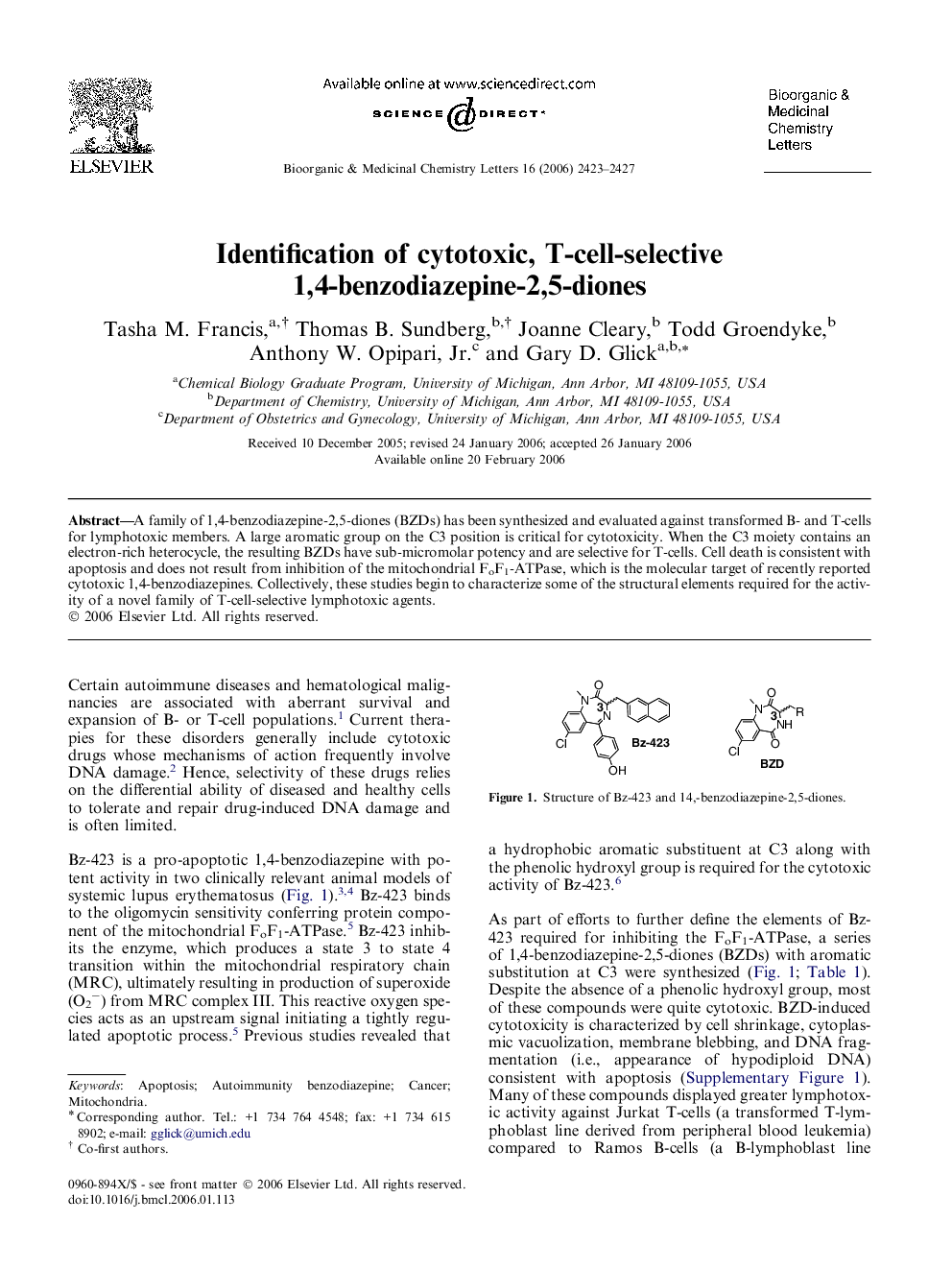| Article ID | Journal | Published Year | Pages | File Type |
|---|---|---|---|---|
| 1374714 | Bioorganic & Medicinal Chemistry Letters | 2006 | 5 Pages |
A family of 1,4-benzodiazepine-2,5-diones (BZDs) has been synthesized and evaluated against transformed B- and T-cells for lymphotoxic members. A large aromatic group on the C3 position is critical for cytotoxicity. When the C3 moiety contains an electron-rich heterocycle, the resulting BZDs have sub-micromolar potency and are selective for T-cells. Cell death is consistent with apoptosis and does not result from inhibition of the mitochondrial FoF1-ATPase, which is the molecular target of recently reported cytotoxic 1,4-benzodiazepines. Collectively, these studies begin to characterize some of the structural elements required for the activity of a novel family of T-cell-selective lymphotoxic agents.
Graphical abstractA 1,4-benzodiazepine-2,5-dione (BZD) library was evaluated for lymphotoxic members. When the C3 substituent contains an electron-rich heterocycle, the resulting BZDs have sub-micromolar potency and are selective for T-cells.Figure optionsDownload full-size imageDownload as PowerPoint slide
